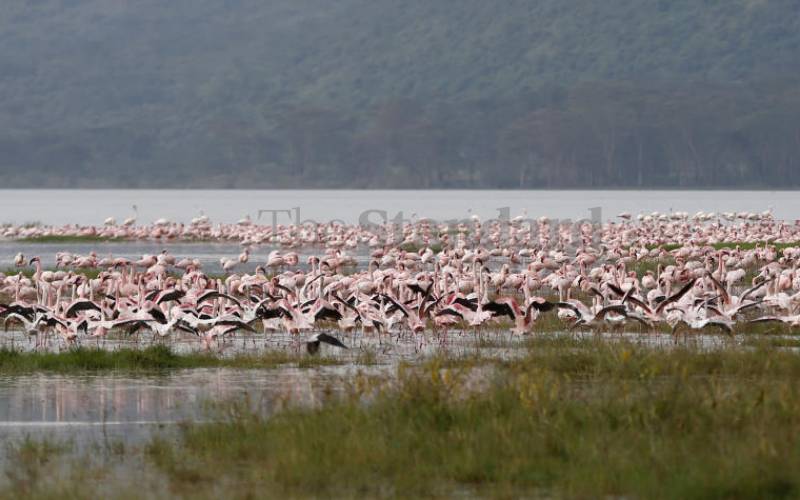×
The Standard e-Paper
Kenya's Bold Newspaper

Flamingos at Lake Nakuru in Nakuru county. [Kipsang Joseph, Standard]
Rising water levels at Lake Nakuru and Bogoria in the Rift Valley has interfered with the habitat of flamingos leading to a decline in their numbers.